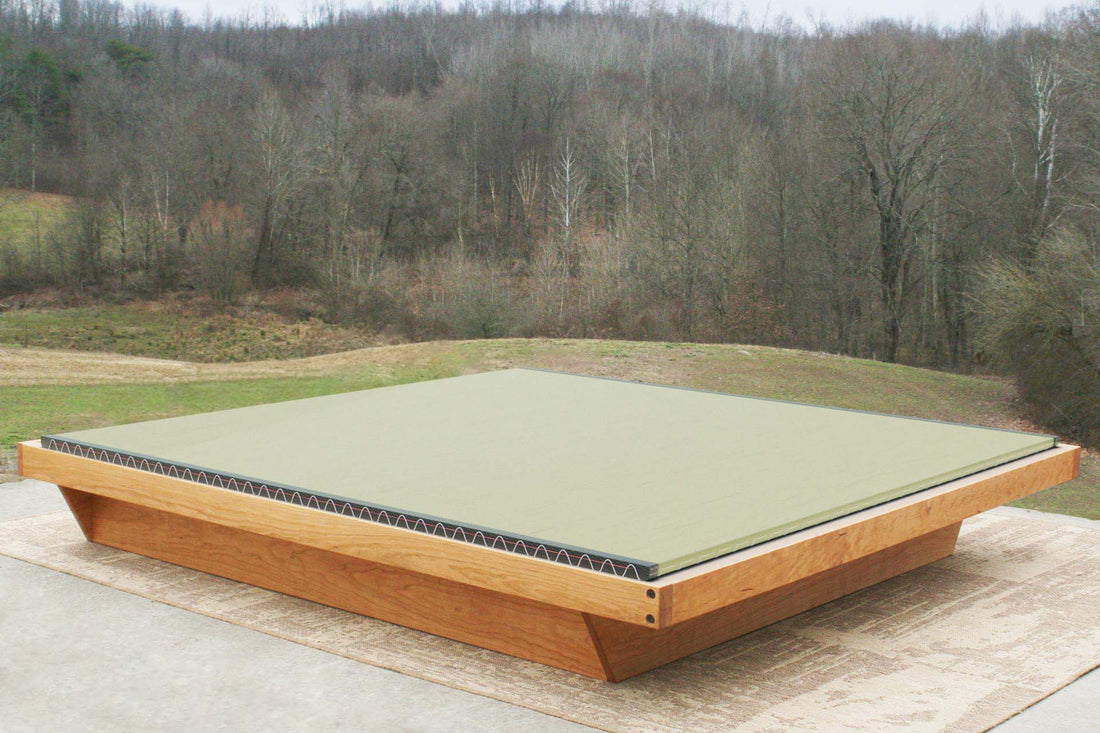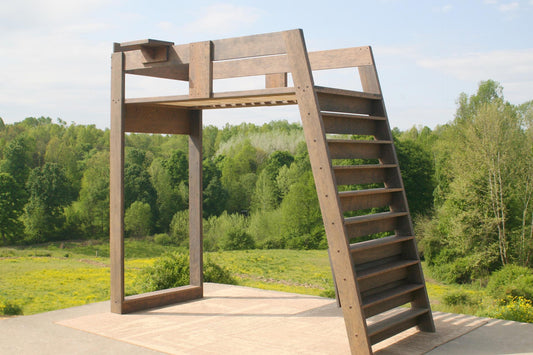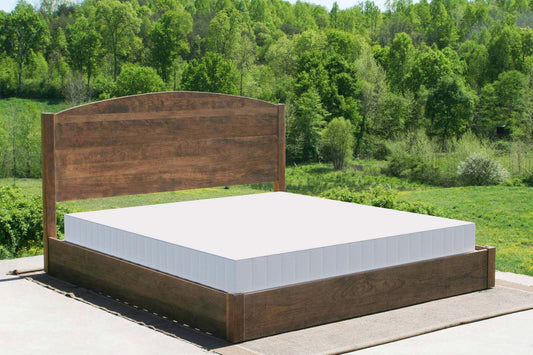Are Tatami beds good for you?
Solid Custom Heirlooms
Is a Tatami bed right for you?
Tatami mats are known for their simple but durable design, classic low profile - and for some people - being the secret to a great night sleep. Here at Solid Custom Heirlooms many customers tell us that that sleeping on a Tatami bed solves their back problems, improves posture and helps them wake up feeling refreshed and ready for the day. The last few years have brought such a huge increase in orders for Tatami and other types of Japanese platform beds that we have devoted a lot of time and attention to how to best build these beds. This blog will dig into what we've learned about the Tatami beds that customers love.
Tatami mat vs. Tatami platform bed frame
What is a Tatami mat?
A Tatami mat is a Japanese style of sleeping floor mat for adults and children alike.
The best Japanese style Tatami mats are made from Rush Grass woven around a baked Rice Hull core. The green hue you see in some of our photos is a reflection of this grass construction. When following tradition, Tatami mats are between 55mm or 60mm - about 2.2 to 2.4 - inches thick.
Modern Tatami mats are made from a variety of different materials that can vary in thickness from 1 inch to 3 inches thick. Many of these mats have a solid synthetic cover that has a more neutral gray to yellow color tone.
Traditionally used directly on the ground or floor in bedrooms, Tatami mats are not soft! A quality Tatami is very firm and sturdy and while they provide little to no cushion for the sleeper, some people find a great deal of benefit in the way they provide strong support to the neck and back during the night. Tatami mats provide very firm, some would say downright hard, support and are probably the opposite of modern day memory foam mattresses!
Tatami bed frame
A Tatami platform bed is a type of platform bed frame that is specifically designed
to support a Tatami mat. The advantage to using a complete platform bed set is that is that the bed frame defines the space, keeps the mat up off the floor, and helps ensure that the bed is clean and free of dirt while also discouraging people and pets from walking on it.
The 1 to 2 inch gap between the wooden slats of a Tatami platform bed facilitate good air circulation keeping your bed clean and fresh. Most of the platform beds that you see on our website can be ordered for use with a Tatami mat.
Can you put a Tatami mat on any bed?
Many bed frames look like they could easily accommodate a Tatami, but before you make a purchase, there are several important factors to consider. For best results its best to find a low bed frame that is specifically constructed and designed for this special type of mat.
Tatami mats need a firm foundation
To properly support a tatami mat, a bed or tatami frame foundation surface should consist of wooden slats spaced 1 to 2 inches apart consistently across the full platform bed and ground surface. Because the Tatami has very little structural rigidity of its own, its important that the foundation be very flat with no low spots or bumps. remember they were originally designed to be used on the floor.

Not all bed frames will accommodate a low profile mat
Next, make sure you have a sturdy platform bed frame - a box spring is simply not supportive enough for a tatami mat.
Finally, check that your bed platform will fit the mat and that no high edges or "lips" made it hard to get into bed. Many beds that are designed for a standard American mattress have trim or edge that is designed to hold a tall mattress in place, and would not interfere with a thick mattress but could cause problems for a thin Tatami.
Note how the bed to the left has no edge or lip - perfect for use with a low profile mattress.
Is it healthy to sleep on a tatami?
Yes! Many of our customers report a dramatic improvement in health after switching to sleeping on a Tatami platform bed. While the rigid surface is not for everyone, many people tell us that changing over to a Tatami platform bed yields a much improved sleep experience.
A Tatami mat is made from natural materials
Traditional Japanese Tatami mats are made from natural materials such as rice straw, rice hulls and rush grass. Advocates of this traditional construction method point out that these materials are inherently hypoallergenic, helping to reduce dust mites and other allergens in the bedroom.

Tatami platform beds can be low VOC.
If you are sensitive to the chemicals used in modern day latex and memory foam mattresses, a Tamami can dramatically reduce the off gassing of toxic fumes in your bedroom.
There is no cotton, wool or metal in a Tatami mat. Combining a mat with a quality hardwood Tatami bed frame that does not use particle board or plywood will create a bed system with very low chemical off gas for a low VOC sleeping setup.
Please note that a new Tatami mat has a distinctive soft rush smell that many people find peaceful and relaxing, especially at bedtime. However if you are extremely sensitive to smell, please plan ahead. The smell does dissipate over time.
Tatami platform beds can reduce back pain and improve posture
Many people tell us that sleeping on the solid, flat surface of a tatami mat allows their legs and spine to settle into a natural position resulting in reduction of back pain during the night and a less sore body when its time to get up. This neutral sleeping position also helps to improve posture and inspires deeper sleep.
Are Tatami mats hard to sleep on?
Sleep comfort is generally a very personal choice and we encourage you to try and many bed frame and mattress styles as possible before making a purchase.
Sleep experts say that it takes time for your body to become accustomed to sleeping on a solid surface. A lot of people will find a Tatami uncomfortable for the first few days or weeks, but given time find that they sleep far better than on a regular mattress. Everyone is different and there is no set time frame for getting used to sleeping on a Tatami mat.
Because of the rigid top surface, a user does not sink into the top of a Tatami in the same way as a thicker, softer mattress. This can be very good for back sleepers and some side sleepers, but if you prefer a softer or more cushy surface you may prefer another type of Japanese mattress such as a a Futon mattress or Shikibuton, which we cover in our blog "What are Japanese platform beds called?"
The pros and cons of a Tatami bed
Pros
-
- Made from natural, low VOC materials
- Excellent back support
- Simple but durable design
- Perfect for back sleepers
- Lower cost vs. a regular mattress
- Easy to clean
Cons
- May be too firm for some people, especially side and stomach sleepers
- Takes time for the body to adapt
- Not as durable as traditional mattresses
- May be uncomfortable for side sleepers
- Difficult for some people to get in and out of bed
Solid Custom Heirlooms
Solid Custom Heirlooms is a custom furniture builder based in Appalachia USA. We use American hardwood to craft a wide variety of beds from simple Japanese platforms to more elaborate luxury beds. If you don’t see what you are looking for, or want to talk more about achieving a specific look or type of bed, please contact us and we would love to help you make your dreams a reality.





